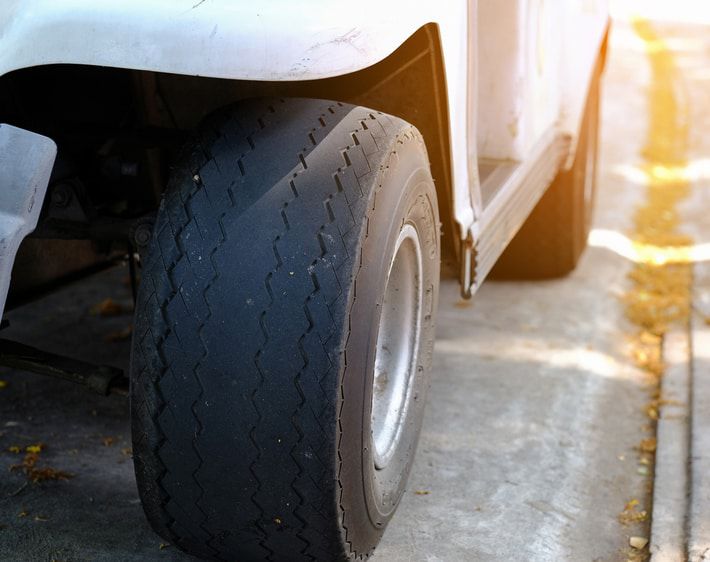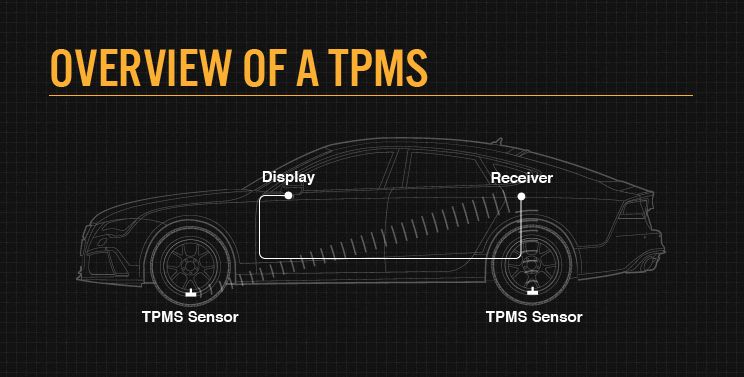Tire tread naturally wears down over time. No surprise there. But what happens when your tires wear down too much and become bald? And just how bald is “bald?” Bald is the point at which it's essential to replace your tires — for your safety and others on the road. Learn the signs of bald tires and what can happen if you drive with bald tires.
What Is a Bald Tire?
Just as a person is bald if they have little to no hair, a tire is bald if it has little to no tread. With each trip you take in your vehicle, the tread of your tires wears down. If you drive too long with worn-down tread, your tires can become bald.
What qualifies as a bald tire? A tire with at least one groove whose tread depth reaches 2/32 of an inch is technically considered bald. A 2014 survey by the Rubber Manufacturers Association found 12% of U.S. motorists reported at least one of their tires was bald.
What Does a Bald Tire Look Like?
It’s not hard to spot a bald tire. Many new tires come with what are known as indicator bars, also called parallel wear bars. If the tread is flush with the wear bars, you’ve got a bald tire. Even without those bars, you can tell whether the tread has worn down a lot simply by inspecting the tire.
You can check the depth of tire tread with a tread depth gauge. Tread depth gauges are available at auto parts stores and online.
You also can measure the tread depth by sticking an upside-down penny into a tread groove. If you can see all of Abraham Lincoln’s head, you should replace the tire. When you do this test, you might notice that some tread sections are deeper than 2/32nds of an inch. However, if any part of a tire fails the penny test, the tire should be replaced.
For road-safety best practices, Firestone Complete Auto Care recommends replacing your tires before they wear this much — around 4/32nds of an inch. Or, if you want to think of it in “penny test” terms, substitute the penny for a quarter, and stick it heads-down into your tires’ grooves. If Washington’s head is visible at any point, you should consider getting new tires.
How Do Tires Become Bald?
Several factors can contribute to tires becoming bald:
1. Under or overinflated tires
A tire that lacks the proper amount of air is underinflated, while a tire that’s carrying a bigger load of air than it’s supposed to is over-inflated. Both of these conditions can cause stress on a tire, leading to increased treadwear.
2. Unbalanced and misaligned tires
An unbalanced tire means there’s an uneven distribution of weight across the wheel or rim. At the same time, a misaligned tire (also called a misaligned wheel) refers to a vehicle suspension that needs to be adjusted. If these problems aren’t fixed, the tires might wear unevenly, potentially leading to baldness.
3. Inadequate tire maintenance
If you don’t keep up with tire maintenance, you boost the odds of underinflated, unbalanced, or misaligned tires. All of those can cause bald tires.
Why It’s a Bad Idea to Drive on Bald Tires
Bald tires might seem like they’re not a big issue, but they can actually produce big problems behind the wheel.
- When you’re driving on a slick road, the odds of losing control, skidding, or hydroplaning go up. This could be particularly dangerous when driving in the rain or on a snowy or icy road during the winter.
- You could find it harder to stop your car when you hit the brakes and harder to keep control of your vehicle since the tire tread helps grip the road.
- It’s easier to puncture a tire when it’s bald. That could lead to experiencing a flat tire, a tire blowout, or losing control of your vehicle.
- In some states, you might even get a ticket for driving with bald tires. Illinois, California, and Washington are a few of these states.
Driving around on treadless tires isn’t just bad for your driving experience. It can also jeopardize everyone’s’ safety, including that of your vehicle and the other motorists’ on the road. Use these tips to watch for bald tire warning signs, and bring your vehicle to Firestone Complete Auto Care when it’s time for a new set of tires.



